Do you find surgical procedures lengthy, medical equipment inefficient, or implants generic? The field of medicine is now being transformed by the entry of 3D printing in medicine—from organ bioprinting to personalised surgical guides. Everything in this new era is quicker and is revolutionising faster!
This blog will give you insight into the processes behind medical 3D printing, its applications, as well as the reasons behind its rapid growth within modern medicine. So, let’s get started!

1) Overview of 3D Printing in Medicine
The adoption of 3D printing technology has affected all industries, including healthcare. This evolution in technology provides an opportunity for doctors and hospitals to design bespoke instruments, models, and even prosthetic implants tailored to individual patients. By the early 2000s, the potential benefits of this innovation were starting to be recognised in medicine, and it has since expanded remarkably.
The concept of 3D printing began in the 1980s, but it took several years before its potential was recognised in the field of medicine. Initially, the technology was limited to crafting basic models of surgical procedures, which aided physicians in strategising for intricate surgeries. However, we have come a long way since then.
In contemporary medicine, the scope of 3D printing spans from making implants to manufacturing personalised prosthetics and dental equipment. Additionally, medical 3D printing creates surgical tools, hearing aids, and even skin grafts. Apart from this, some scientists are trying to print tissues and organs for transplantation.
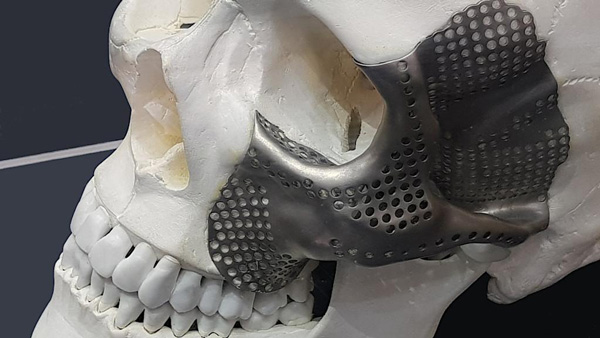
The personal touch that can be achieved with 3D printing is extraordinary when combined with medical treatment. Tools tailored to require precise dimensions can be crafted by doctors using scans of their patients’ bodies. Well, such precision is nearly impossible with conventional methods.
As technology continues advancing, the application of 3D printing within healthcare will expand further. Yes, it is enabling treatments that we could not have dreamed of just a few years back.
2) How Does 3D Printing Work in Medicine?
The application of 3D printing in medicine begins with digital designs, which can be crafted into tangible objects. Typically, a patient’s MRI or CT scan is transformed into a 3D model. This model outlines the crucial areas, such as bones, organs, or devices, which need to be printed and illustrates their precise shape and size.
Once it has been prepared, the digital file is forwarded to a printer where it undergoes construction layer by layer through plastics, resin, metals, or even specialised bio-inks. This technique, known as additive manufacturing, utilises each layer progressively until completion to finalise an object.
Certain medical 3D applications require specific techniques for various items. For instance:
- Stereolithography (SLA) employs light to solidify liquid resin, which makes it suitable for intricate surgical models.
- Selective Laser Sintering (SLS) applies lasers to powdered materials to meld them, making durable medical equipment possible.
- Fused Deposition Modelling (FDM), used for low-cost prototypes and braces, heats plastic and constructs it in layers.
- Bioprinting combines cells with biomaterials to fabricate structures resembling human tissues.
As an example, doctors have specific uses for printed models such as planning diagnostic and surgical procedures. Dentists use them to print crowns and bridges while engineers design custom prosthetics. In addition, surgically guided screw and tool placement has also been enhanced using precision printed models.
Well, the entire bioprinting sequence is quick, reliable, flexible, and reproducible. Something that used to take several weeks can now be produced in 24-48 hours. Additionally, modern medicine incorporates 3D technology seamlessly into clinical practice.
On-the-spot production of devices or tools boosts efficiency, slashes expenses, and improves healthcare quality – a fundamental principle of contemporary medicine harnessed by 3D printing. It is transforming virtual designs into tangible solutions for actual patients.
3) Applications of 3D Printing in Medicine
How is 3D printing being used in medicine? Well, 3D printing applications in medicine are expanding tremendously and transforming how practitioners manage their patients. From tools to tissues, this technology helps create personalised solutions with speed and accuracy. Here are some of the main ways it’s being used:
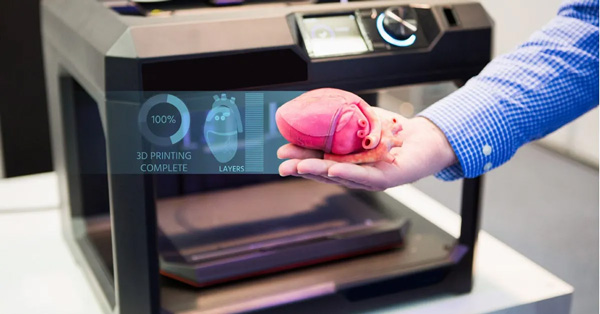
- Prosthetics
For all ages, 3D printing has enabled the fabrication of custom prosthetic limbs. These devices can be tailored to the form and dimensions of the user’s body, facilitating comfort and enhancing functionality. They’re also more affordable than traditional prosthetics.
- Surgical Models
Practitioners prepare for complicated surgeries by utilising 3D printed models of organs and bones as surgical rehearsals. The models enable visualisation of challenges, which render surgical operations safer and speed up procedure duration.
- Dental Devices
In dentistry, improve dentures production, crowns, bridges, as well as make aligners through 3D printing, as it enhances efficiency while improving precision.
- Medical Instrumentation And Implants
These items include hips, skull plates, and spinal cage implants, which are customised for each individual patient’s anatomy. This is done by 3D printing technology, along with surgical guides intended for particular treatments.
- Tissue Bioprinting
Scientists are now printing tissue samples by layering human cells. They can be used for drug testing and studying diseases. In the future, this could allow for the creation of full-sized organs that can be printed and used for transplants.
- Hearing Aids
Modern 3D printing technology is utilised in the manufacturing process of hearing aids, ensuring they are tailored to each individual, which enhances convenience and improves audiologic outcomes.
The impact of 3D printing in medicine goes beyond novelty; it represents a significant shift in how care is delivered. Treatment has become more individualised than ever before while remaining effective and accessible at the same time.
4) Pros and Cons of 3D Printing in Medicine
Every new invention is accompanied by an array of benefits and drawbacks; here 3D printing in healthcare pros and cons;
-
Pros:
+ Personalised Healthcare: The personalisation that comes with medical 3D printing is one of its most notable strengths. Tailor-made surgical tools, prosthetics or implants designed specifically for a certain patient’s anatomy guarantee a higher level of comfort as well as better functioning and recovery time.
+ Speedier Production: Conventional manufacturing takes weeks, but 3D printing can produce many medical parts in a matter of days or even hours. This works out especially well during emergencies and time-sensitive operations.
+ Reduced Expenses: Frequently, tools and models that are 3D printed are far less expensive than those physically manufactured using traditional techniques. It also minimises waste since only what is required gets printed.
+ Enhanced Surgical Preparation: With the advancements in technology, doctors have the ability to print 3D models of organs, bones, or even tumours, which they can study before performing the surgery. These models greatly enhance comprehension of the problems and help mitigate risks during the operation.
+ New Perspectives for Investigators: Bioprinting is actively being used by researchers to form tissues, blood vessels and portions of organs as well. Such developments can radically impact organ transplant procedures as well as drug tests done in laboratories.
+ Helps Patients Understand Their Conditions Better: Patients can be visually walked through their bodies by doctors using printed models. This helps aid explanations for proposed surgeries, making patients feel more engaged in their healthcare while enhancing doctor-patient relations for shared decision-making.
-
Cons
– Equipment Cost Is Too High: In comparison to the costs involved in printing parts, the 3D printers used for medical purposes are significantly more expensive. This is a great hindrance to the adoption of technology by smaller hospitals.
– Material Restrictions: Medical applications sometimes have material restrictions due to safety concerns or lack of structural integrity. Certain printers are restricted to using specific plastics or resins, which impose limits on what can be manufactured.
– Difficulties with Regulations: Regulatory agencies such as the FDA classify the medically related 3D printed devices as controlled technology subject to stringent criteria for risk protection measures of health and safety of users. Thus, it takes considerable time and slows down innovation.
– Absence of Skilled Personnel: Operating medical 3D printers is sophisticated, and not all clinics have people trained with the tools needed to operate them competently. It requires personnel to handle the computer programs associated with these machines.
– Inconsistent Quality: The relative youth of 3-D printing means that, in some instances, goods produced may fall short of precise requirements. So, it can pose dangerous consequences during critical medical situations.
5) Enhancing Medical Applications with On-Demand Manufacturing Services
As 3D printing technology continues to evolve within healthcare, numerous specialists are accessing dependable on-demand manufacturing services for prompt and accurate precision. A company making remarkable progress in this area is LTC Proto.
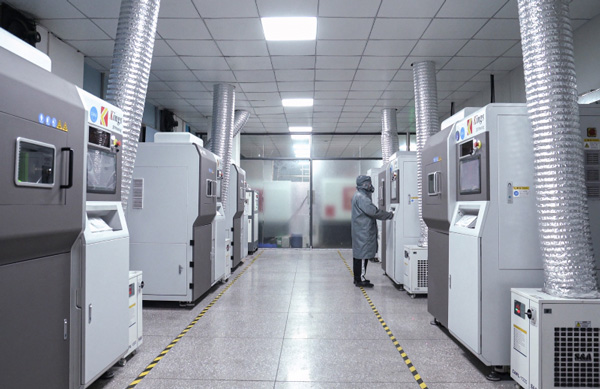
LTC Proto distinguishes itself through its deep focus on medical 3D printing. We assist hospitals, laboratories, and medical equipment companies in transforming concepts into functional components using the advanced 3D printers LTC Proto has.
From surgical models to custom implants manufactured by LTC Proto in proficient quantities or individually tailored surgical models provided with speed and precision, where every detail matters.
LTC Proto employs advanced 3D printing technologies like SLA (Stereolithography), SLS (Selective Laser Sintering), MJF (Multi Jet Fusion), and FDM (Fused Deposition Modelling). These systems accommodate a wide range of materials, from medical-grade resins to biocompatible plastics, making certain that each component is safe for medical applications.
Key services from LTC Proto include:
- Custom surgical instruments
- Prosthetic and Orthotic Devices
- Anatomical models with intricate details
- Covers for medical equipment
- Rapid prototyping and low-volume manufacturing
So why LTC Proto? We ensure ultra-fast delivery, rigorous quality assurance, and comprehensive design assistance. Everything needed for dependable and safe medical parts. Moreover, our friendly customer support is another bonus, as it is always available.
If you have exciting new concepts in medicine to discuss and want to get any 3D service, it can be done easily using LTC Proto. To start the process of your request, visit www.ltc-rapid.com, where you’ll find the option “Get a Quote”. Here, upload your 3D model or design file along with material and quantity requirements and hit submit.
LTC Proto’s specialist team will look into your request as soon as it is received and will provide you with a swift and precise quotation. If necessary, we will provide additional recommendations to optimise your design or material considerations, which are critical for medical applications.
We are readily available to address all inquiries, walk you through the steps, and assist you in selecting the most suitable 3D printing method tailored for your project. Well, with competitive pricing, rapid turnaround times, and robust customer service, LTC Proto facilitates an effortless transition from concept to completion of the part.
6) 3D Printing Materials and 3D Printers Used in Healthcare
The appropriate materials and equipment greatly influence the success of 3D printing and medical applications. Meeting distinct medical requirements involves specific tools; therefore, a wide variety of healthcare 3D printers, along with biocompatible materials, are utilised in this industry for efficiency and safety.
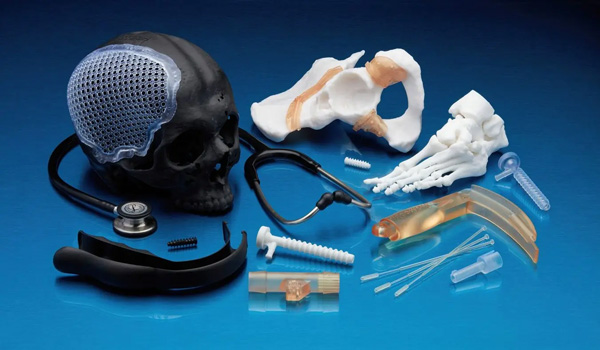
Commonly Used Materials
a) Medical Grade Plastics
Plastics such as PLA and ABS nylon, alongside Peek, are extensively employed in manufacturing surgical instruments like prosthetic braces, devices, handheld shrinkable casings protective housings. These plastics have a favourable strength-to-weight ratio alongside being medically compatible.
b) Resins
Liquid resins used in SLA printers are cured with light. Their accuracy and smooth finish make them perfect for dental work, detailed models, and surgical guides.
c) Metals
Implants such as bone plates, dental screws, and joint replacements make use of titanium and stainless steel. These metals are strong, non-corrosive, and biocompatible over extended periods in the body.
d) Bio-Inks
In bioprinting, bioinks composed of living cells along with biocompatible materials are utilised to design soft tissues for scientific study as well as future transplants.
Types of 3D Printers
i) SLA (Stereolithography): Perfect for intricate detail scans and precision surgical models.
SLS (Selective Laser Sintering) – Suitable for complex parts like implants or other surgical tools due to their strength.
ii) FDM (Fused Deposition Modelling): Best used for cost-effective prototypes and devices tailored to individual patients.
iii) DMLS (Direct Metal Laser Sintering): Focused on producing high-strength metal implants.
iv) Bioprinters: Specialised in the layering technique to construct tissues and organs from living cells.
Every medical assignment will determine what material or printer is most useful. The integration of these technologies permits medical practitioners, like never before.
7) The Future of 3D Printing in Medicine
What is the future of 3D printing in medicine? Well, the future of 3D printing in medicine field looks very promising. As technology advances, this field is expected to bring even more life-changing solutions to patients around the world.
- Bioprinting of Organs and Tissues: Research continues to advance in the area of scanning and printing living tissues, blood vessels and organs. This could alleviate supply issues drastically and shorten wait lists for organ transplants.
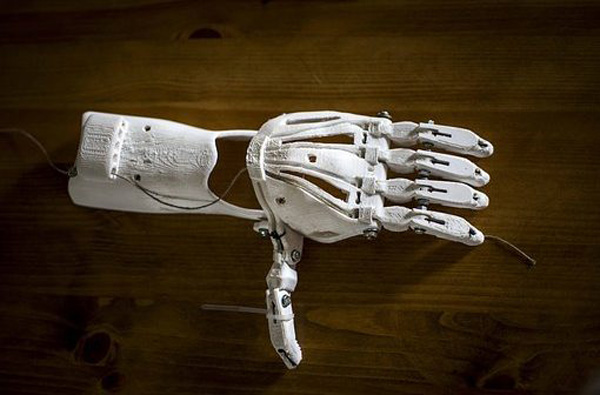
- Custom-Made Medicine: In the coming years, it may be possible that physicians will be able to print out customised pills and synergistic drugs for each patient. This can lead to improved compliance with treatment protocols while minimising side effects.
- Greater Precision with Reduced Lead Times: Advanced printers use superior materials designed specifically for surgical tools and patient models, reducing the time needed to produce them. Hospitals will subsequently become more agile in attending to emergencies or other routine surgeries.
- AI-Driven Designs: Planning time will greatly shrink because artificial intelligence helps ensure intricate components are designed optimally. It makes them easier to fabricate while enhancing precision during the actual printing process.
- In-House Hospital Printing: Hospitals will soon have access to 3D printers, which can enable fabrication of an array of surgical models, implants, or instruments ‘just-in-time’, saving considerable operational costs.
- Weaker Financial Barriers: As new technologies become ubiquitous, their adoption as a more affordable alternative in smaller clinics will broaden access without compromising quality standards.
8) Disclaimer
Alright! Now, everything is clear about how 3D modelling is used in medicine? Although this text is used for educational and informational purposes only, it does not substitute professional opinions such as medical advice, diagnosis, or treatment.
Always seek the guidance of an appropriate medical practitioner prior to any decision concerning their health or engaging in new therapies. Although 3D printing holds promise for transformative applications in medicine, its appropriateness and impact will be different from case to case.
